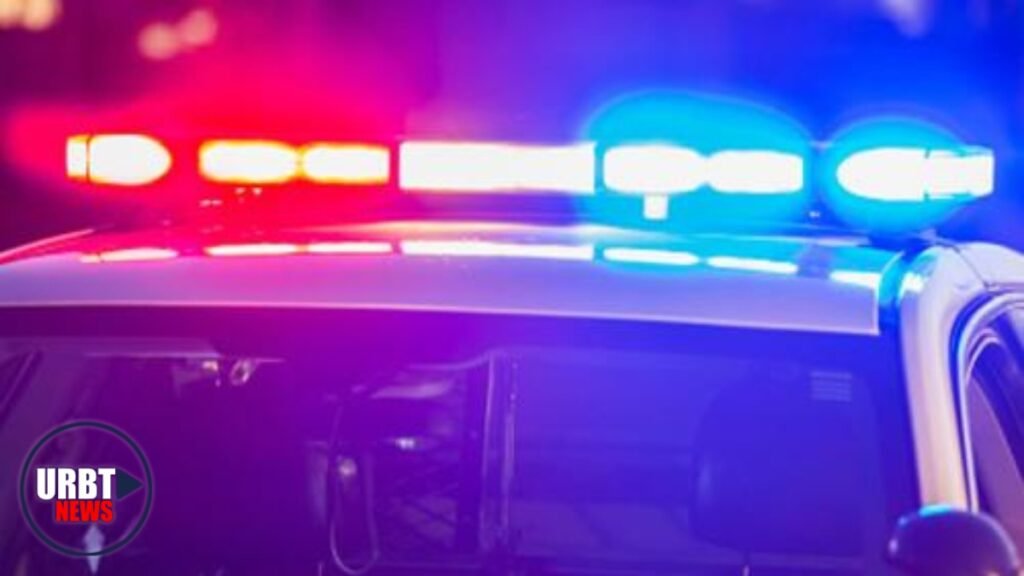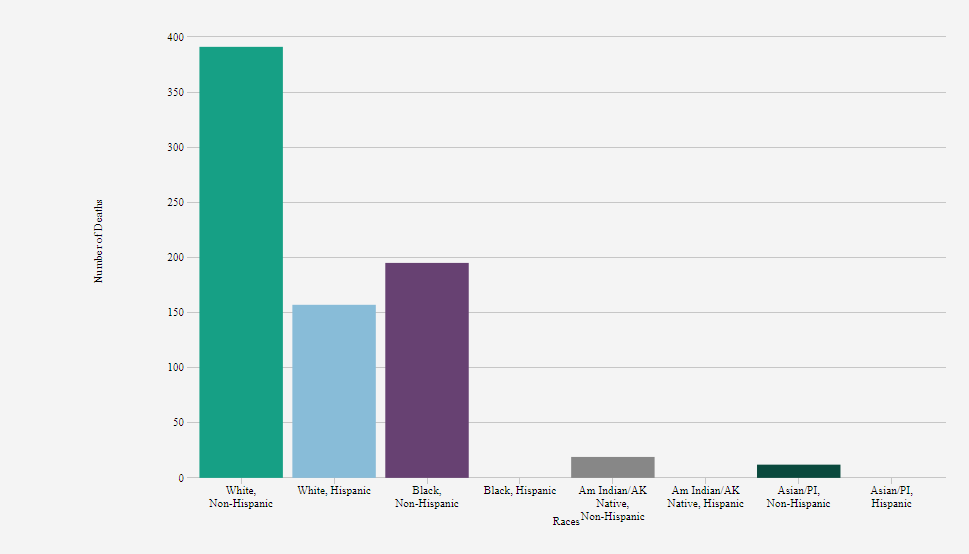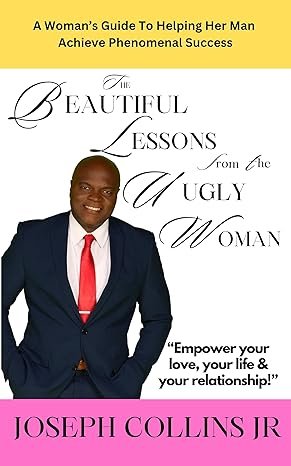National News
Police Violence is Gun Violence
Police Violence is Gun Violence. We must rebuild community trust and refocus law enforcement efforts around just, effective, and proactive responses to community violence.
Published
2 years agoon

Police Violence is Gun Violence. Law enforcement’s use of excessive force garners renewed scrutiny following today’s verdict, in which a jury found Aurora, Colorado. Police officer Nathan Woodyard not guilty of reckless manslaughter and a lesser-included charge of criminally negligent homicide in the death of Elijah McClain. McClain an unarmed 23-year-old Black man who died in 2019 after being subdued by police. Later he was injected with ketamine by paramedics.
Unsurprisingly, police shootings and incidents of police brutality contribute significantly to cycles of distrust and community violence. Every instance of police brutality reinforces this mistrust.
Although no national or standard definition exists, an officer-involved shooting (OIS) is the discharge of a firearm.
Have “We the People” Become Desensitized?
Research on the impact of violence has consistently found that the more exposure people have to violence in television, video games, and real life, the more they become desensitized or habituated to future violence. With the desensitization of violence, people’s natural negative responses to such stimuli are reduced, along with the amount of empathy and sympathy they have for victims of violence.
As access to creative media continues to expand, issues related to the desensitization towards police violence necessitate highlighting the harmful relationships between the criminal justice system and American civilians. The introduction of police body cameras has heightened public debate on the use of force by police officers. With a particular view of officer-involved shootings (OIS).
For example, somebody videotaped the critical piece of evidence in the 1991 beating of Rodney King by Los Angeles Police Department (LAPD) police officers. The video-recorded beating of Rodney King exposed the use of police violence to communities that would otherwise not witness such acts. Similar to the Rodney King incident, videos of violence in Black communities continue to be shown on a rapid loop on various media platforms to showcase the improprieties of the police, the victims, or both.
Duty to Protect and Serve
In one year, more than 50 million persons in the U.S. have contact with police during a traffic stops, street stops, arrest, traffic accident, or resident-initiated contact.
Law enforcement officers have the authority to use deadly force to protect their own lives and the lives of others and, under certain circumstances, stop the flight of felons. It is a tremendous authority, and its use generates intense public interest and scrutiny. Particularly in a world where camera footage can be made immediately available or even live-streamed as it is taking place. Incidents in which police officers use deadly force have led to protests and civil unrest in many communities.
That said, brutality and dehumanization are deeply embedded in many departments.

PICTURE: Police car with red and blue lights flashing. PHOTO: COURTESY OF: Wikipedia (Creative Commons)
Deadly Use of Force
On average, police in the United States shoot and kill more than 1,000 people every year, according to an ongoing analysis by The Washington Post. While police fatally shot a similar number of unarmed White non-Hispanic Americans, the racial disparities are apparent, given that there are five times as many white Americans as Black or African Americans.
According to an UIC School of Public Health study, legal intervention injuries had more severe outcomes. Additionally, they disproportionately impacted marginalized communities — Black and Brown Americans (BIPOC), as well as people suffering from mental health conditions.
Many police officers see their use of deadly force as morally justified, obligatory, and even virtuous. However, the use of deadly force is something that we, as citizens and police departments nationwide, should not take lightly.
Officer-Involved Shootings Statistics
Although half of the people fatally shot by police are White, Black Americans are shot at a disproportionate rate. According to the Bureau of Justice Statistics, both Black/African-Americans and Hispanics/Latinos are twice as likely to experience the threat of or use of force during police-initiated contact despite maintaining a population roughly one-fifth the number of White non-Hispanics.
While White non-Hispanics account for roughly 76 percent (75.5%) of the U.S. population, Black or African Americans account for approximately 14 percent (13.6%). Blacks are killed by police at more than twice the rate of White non-Hispanic Americans. Hispanic or Latino Americans, who comprise roughly 19 percent (19.1%) of the U.S. population, are also killed by police at a disproportionate rate. To put this into perspective, in comparison to the 2.3 per million White, non-Hispanic Americans who are fatally shot by police per year, 5.7 Black or African Americans per million, and 2.4 Hispanic or Latino Americans are fatally shot by police each year, according to The Washington Post Fatal Force Database.

PICTURE: Legal Intervention Deaths Distribution by Race (2020). PHOTO: COURTESY OF: The Washington Post Fatal Force Database.
DOWNLOAD THE URBT NEWS APP Police Violence is Gun Violence
The Washington Post Fatal Force Database Findings
Since January 1, 2015, 8,811 victims have been fatally shot by an on-duty police officer. Of these, 3,811 of the victims were White non-Hispanic, 2,027 victims were Black or African American, and 1,388 were Hispanic or Latino.
Startlingly, of the 8,811 victims, 517 were unarmed, and 4,714 were not fleeing at the time police killed them. Combined, unarmed, non-fleeing victims accounted for 236 of the victims fatally shot during police-initiated contact.
Even more appalling is the fact that of the 236 unarmed, non-fleeing victims, 70 were Black or African American, and 43 were Hispanic or Latino. Combined, these underserved, marginalized communities account for 113 of the unarmed, non-fleeing victims fatally shot by law enforcement, while 104 were White non-Hispanics.
Researchers have estimated that, on average, a Black unarmed person is at least as likely to be shot by police as someone who is white and armed.
The number of fatal police shootings has risen slightly in recent years. Police killed the highest number of people on record in 2022.
Officer-Involved Shootings Involving BIPOC Victims
The history of policing and its relationship to Black and Brown communities in this country is complex and fraught.
Brandon Cole
On August 5, 2023, Brandon Cole, an unarmed 36-year-old Black man, was fatally when two Denver Police Department officers responded to a “violent” domestic violence call in the southwestern part of the city and found a Cole, who had reportedly “thrown” his wife from her wheelchair and was beating his 14-year-old son.
Denver Police Chief Ron Thomas said at the scene, Cole “became agitated and aggressive” and advanced toward the officers after stopping the assault. When he disobeyed their several commands, one of the officers deployed a Taser, which was ineffective, Thomas said. That’s when the other officer fired his duty weapon.
Officers suspected he had a knife, but he did not possess one. As it turned out, Cole only had a black marker in his hand.
Based on how Cole is acting in the video, including seeming to conceal one of his hands behind his back, two experts in police use of force said the officer seemed to act reasonably in response to someone she believed to have a knife and intended to hurt her.
Isidra Clara Castillo
On July 9, 2023, Isidra Clara Castillo, an unarmed 38-year-old Hispanic woman, was fatally shot in an officer-involved shooting while a passenger in a vehicle during a traffic stop in Amarillo, Texas. Police said the license plate on the suspect vehicle did not match the vehicle that it was on.
According to the Amarillo Police Department, Andrew Scott Norton, 32, pointed a gun at officers after exiting the vehicle. Seated in the front seat during the incident, Castillo was, also, struck by gunfire. He died at the scene, and she later died from her injuries.
It did not result in any injuries to officers.
DOWNLOAD THE URBT NEWS APP Police Violence is Gun Violence
Officer-Involved Shootings Involving Victims In Mental Crisis
Lamoris Dejuan Speight Jr.
On September 10, 2023, Lamoris Dejuan Speight Jr., a 22-year-old, unarmed Black Army reservist who was “in mental crisis,” was shot and killed by a Wilson County deputy in Saratoga, N.C., after he choked another deputy almost to the point of unconsciousness, according to the sheriff’s department.
James Lanier
On February 24, 2023, James Lanier, a 34-year-old, unarmed and naked Black man, who had a history of and had been dealing with mental health issues was fatally shot by a Wallace police officer in the parking lot of a Wallace, N.C. convenience store. According to Wallace Police Chief James “Jimmy” Crayton, Lanier attacked the officer and continued attacking even after being tased.
According to Chief Crayton, Lanier’s behavior was more indicative of someone under the influence of controlled substances than of someone experiencing a mental health crisis, or perhaps both.
Lanier was naked and disturbing customers at the time, the store owner said at the time of the incident.
According to District Attorney Ernie Lee, Wallace Police Department officers responded. Video surveillance shows Lanier pushing the officer and refusing to back off despite repeated requests. The officer tased Lanier, but it appeared to have no impact on him.
A way to engage with persons with a history of mental illness, which does not result in death, must exist.
DOWNLOAD THE URBT NEWS APP Police Violence is Gun Violence
Combatting Dehumanizing Language
Law enforcement refers to victims as “subjects” involved in the incidents. Language like this dehumanizes the victim because it denies their humanness and portrays them as unthinking brutes or unfeeling machines.
Good intentions don’t blunt the impact of dehumanizing words or or make the language any less damaging. There needs to be an intentional re-training of police officers to model the use of people-first language to combat dehumanization. After all, we are all human beings human beings capable of deserving, suffering, and understanding the harm done to us.
Call for Transformation to Policing
One of the most dangerous things is for a police force is to lose the trust of its community. Police shootings, as well as other forms of police brutality, do untold damage to these already fragile relationships.
The public must demand a transformation to policing. One that holds officers in the highest regard for the sanctity of human life, dignity, and people’s liberty. Only in extreme circumstances and when all less-lethal means have failed, should officers apply deadly force.
Communities torn apart by distrust, gun violence, overpolicing, and underprotection have a clear path forward. When police departments focus on building trust and concentrating their efforts around violence prevention, both law enforcement officers and community members are safer.
We must rebuild community trust and refocus law enforcement efforts around just, effective, and proactive responses to community violence.
DOWNLOAD THE URBT NEWS APP Police Violence is Gun Violence.
You may like
-


Iran Faces “Full-Scale War” with U.S., Israel, Europe, Warns President
-


Things to Do on New Year’s Day: Fresh Ways to Start the Year Right
-


Did the U.S. Bomb Nigeria? Unpacking the Viral Claim and Its Implications
-


Why Men Over 30 With No Kids Are Often Viewed as a Red Flag
-


Second Actor Accuses Tyler Perry of Sexual Assault in New Lawsuit
-


Remembering Lamarr Wilson: Tech Community Mourns the Loss of a Guiding Light


